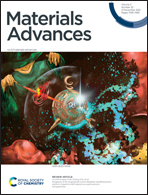Mechanisms for doped PEDOT:PSS electrical conductivity improvement
Abstract
Due to their good electrical conductivity and versatility, conductive polymers (CPs), in particular, poly(3,4-ethylene dioxythiophene) (PEDOT):poly(styrene sulphonate) (PSS), have recently attracted considerable research interest in bioelectronics applications. This study provides insight into the mechanisms in PEDOT:PSS for increasing electrical conductivity. As such, the preparation of doped PEDOT:PSS using distinctive approaches, such as undergoing treatment and using secondary dopants is focused primarily on improving its electrical efficiency. It also systematically addresses various primary parameters that have significant effects on its conductivity. We present the potential of doped PEDOT:PSS for many promising applications in fields such as bioelectronics, through an in-depth analysis of the most remarkable studies recorded by various research groups over the past decade. Therefore, this review is expected to be significantly helpful in promoting further studies, as well as paving the way for increased qualification and productivity for future revolutions of organic CP materials.



 Please wait while we load your content...
Please wait while we load your content...